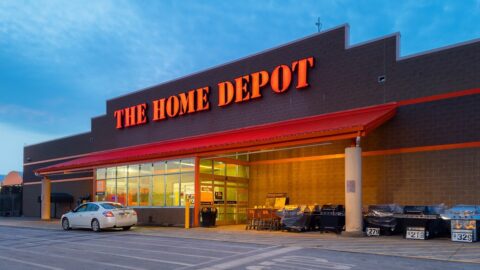If the events of 2024 taught us anything, it’s that “value” can mean many different things depending on a consumer’s demographics, psychographics and cultural context. Moreover, what they find valuable from a retail or product perspective can depend both on the product category or their mindset at a specific point of time. The bottom line: the “value” definition is highly nuanced and contextual to each individual person.
Holiday sales data from Mastercard, Visa and Salesforce pointed to improving consumer confidence. However, with a new presidential administration bringing new policies in a few short weeks, industry experts believe that value will remain top of mind with consumers, regardless of their economic standing.
In Retail TouchPoints’ 2025 Trends & Predictions Report, 15 analysts, experts and practitioners shared the tech, trends and topics they believe will dominate industry discussions over the next year. Below is a summary of some of the top themes to come from these videos, as well as the key questions executives should ask and answer to drive their decision-making in 2025.
Question 1: “What does my target consumer value?”
Asking how your target customer defines value in their daily lives can support your foundational vision and planning for the next year. Getting this more granular perspective also can help you be more creative with your pricing, promotions and experiential strategies. As Melissa Minkow, Global Director of Retail Strategy for CI&T noted:
“Most economists predict the impact of the taxes and tariffs we’re all anticipating on products will get passed along to consumers; that cost consciousness will be even more top of mind. Retailers are going to have to meet consumers in the middle and find even more ways to be strategic with their pricing and promotions.”
Being strategic goes beyond dynamic pricing, according to Minkow, including creative product bundling, “negotiation commerce” solutions that use AI to allow consumers to receive individualized discounts, and value-driven subscription and membership programs.
Question 2: “Does it make sense for our brand to compete on price?”
Global marketplaces like Shein and Temu have completely redefined pricing and merchandising expectations online. Combining dopamine-driven marketing tactics like games and giveaways, coupled with vast assortments, they’re creating addictive spaces that inspire people to shop.
As a result, Shein and Temu have become the ultimate Amazon competitors — so much so that the online giant is testing a new Haul destination to keep pace. But the reality is that not all brands and retailers have much to gain from taking such an approach. That’s why Jack Stratten, Director of Insider Trends, believes retailers should be thoughtful about whether they want to compete against these players.
“It’s time to have clear, laser-focused clarity on your purpose and identity as a retailer. If you’re going to join that fight, to be as available or affordable as these retailers, that’s going to be a real fight to join that race to the bottom. Perhaps more importantly, there needs to be clarity around why you’re not doing that. What are you doing better than them? Maybe you can get stuff to them faster, or maybe the quality [of your product] is better. Maybe you have more of a story to tell, but you have to tell that story well.”
If merchants do not have this clarity, they will simply fall into the middle and fail to stand out to their target customers.
Question 3: “How can we tap into what’s culturally relevant and emotionally resonant?”
Authenticity has evolved into “emotional commerce,” which Sarah Engel, President of January Digital and January Consulting, defines as the “blending of nostalgia, innovation and deeper connections between consumers and brands.”
However, creating emotional commerce requires much more than simply collaborating with a nostalgic brand. Brands and retailers need to fully understand consumers’ emotional and psychological drivers, and determine how best to activate them across digital and physical channels. As Engel noted:
“Consumers are seeking comfort and positivity in every interaction, whether that’s through nostalgic mediums like physical catalogs that they can hold in their hands, or an immersive experience through Augmented Reality (AR) that tours a factory showing how a luxury bag is being made…In parallel, brands are going to be reimagining traditional tactics, such as direct mail and out of home advertising, but they’re going to be infusing them with cutting-edge technology like AI capabilities to create these impactful, personalized and meaningful touch points.”
These trends reaffirm the need for retailers to blend the best of both old and new to design experiences that truly resonate with consumers.
Question 4: “What media adjacencies can we tap into to optimize marketing and advertising experiences?”
Adaptive commerce is where every experience feels seamless, personalized and dynamic, according to Jeffrey Bustos, VP of Measurement, Addressability & Data for the IAB. Retail media, or more broadly commerce media, is enabling these adaptive commerce experiences, with retailers and media entities converging to build solutions that make advertising moments feel more immersive and contextual.
Bustos believes this concept will evolve even further in 2025, with retailers sharing purchase data, and CTV and streaming platforms sharing audience insights, to create a more holistic view of the customer and campaign performance measurement. Privacy-focused data collaboration among all parties will be key for this trend to reach its full potential.
“Transactional data is improving and providing a more personalized, granular experience within the CTV platform, and this is really combining the ability of discoverability that video advertising provides with the more personalized and targetable middle- and lower-funnel capabilities that retail media provides. Now I know if someone watches the ad if they bought an item.”
Question 5: “Which AI applications and use cases would add the most value to our business?”
Several experts indicated that 2025 will be the year that more retailers will prioritize their AI investments and will develop systems and processes that will help them operationalize it effectively for the appropriate teams and functions.
With use cases spanning from personalization to customer service, merchandising, operations and even loss prevention, Anjee Solanki, National Director of Retail Services & Practice Groups at Colliers U.S., reminded retailers that they need to use AI as an enabler of innovation and a means to enhance human knowledge and skills.
Click here to get more trends and predictions from 15 industry experts.













